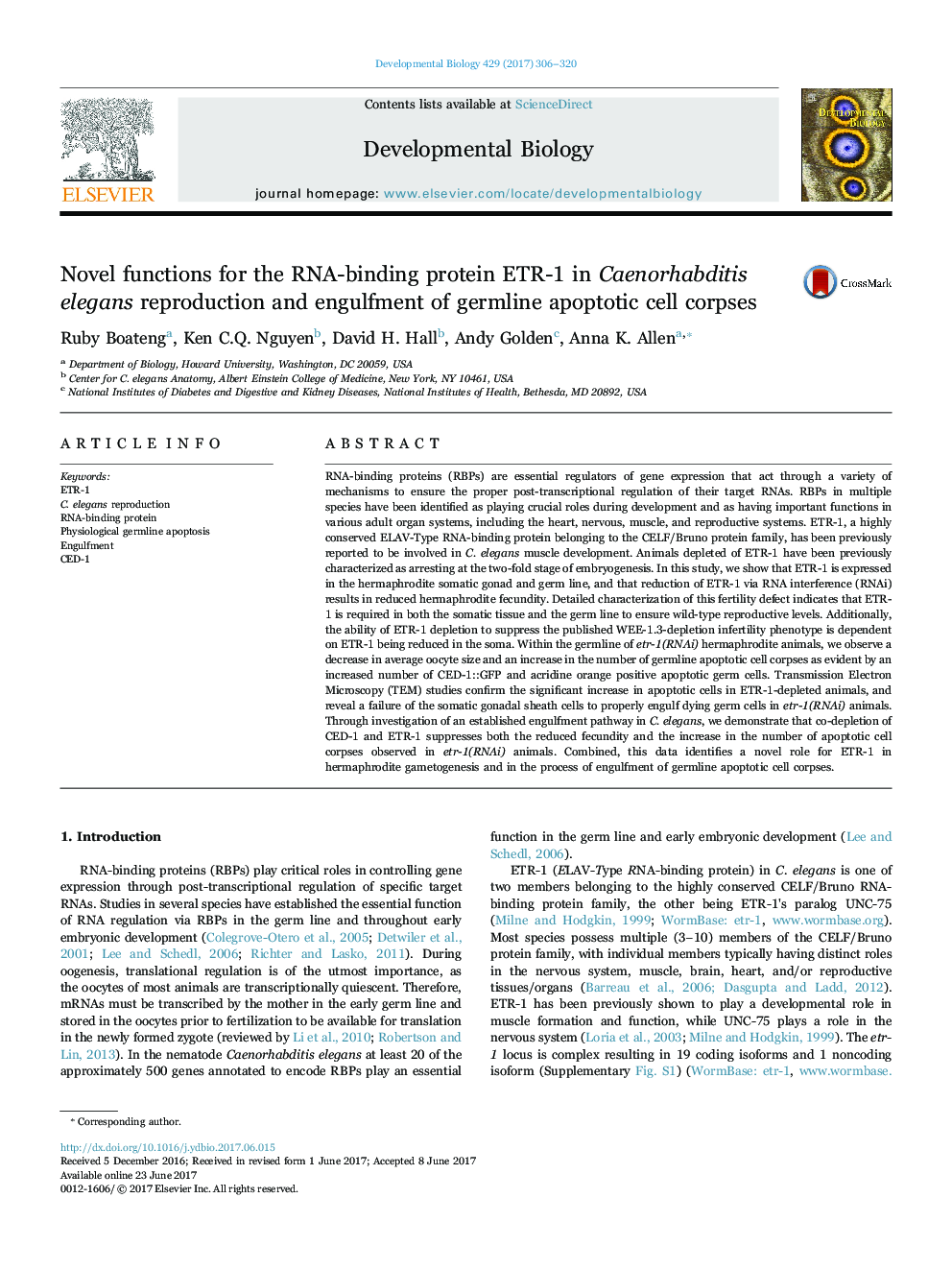| Article ID | Journal | Published Year | Pages | File Type |
|---|---|---|---|---|
| 5531910 | Developmental Biology | 2017 | 15 Pages |
â¢ETR-1 is required for full reproductive potential of hermaphrodites.â¢ETR-1 localizes to both the somatic gonad and the germ line in hermaphrodites.â¢ETR-1 depletion results in smaller oocytes.â¢Depletion of ETR-1 results in an increase in germline apoptotic cell corpses.â¢Loss of ETR-1 results in a failure to properly engulf apoptotic germ cells.
RNA-binding proteins (RBPs) are essential regulators of gene expression that act through a variety of mechanisms to ensure the proper post-transcriptional regulation of their target RNAs. RBPs in multiple species have been identified as playing crucial roles during development and as having important functions in various adult organ systems, including the heart, nervous, muscle, and reproductive systems. ETR-1, a highly conserved ELAV-Type RNA-binding protein belonging to the CELF/Bruno protein family, has been previously reported to be involved in C. elegans muscle development. Animals depleted of ETR-1 have been previously characterized as arresting at the two-fold stage of embryogenesis. In this study, we show that ETR-1 is expressed in the hermaphrodite somatic gonad and germ line, and that reduction of ETR-1 via RNA interference (RNAi) results in reduced hermaphrodite fecundity. Detailed characterization of this fertility defect indicates that ETR-1 is required in both the somatic tissue and the germ line to ensure wild-type reproductive levels. Additionally, the ability of ETR-1 depletion to suppress the published WEE-1.3-depletion infertility phenotype is dependent on ETR-1 being reduced in the soma. Within the germline of etr-1(RNAi) hermaphrodite animals, we observe a decrease in average oocyte size and an increase in the number of germline apoptotic cell corpses as evident by an increased number of CED-1::GFP and acridine orange positive apoptotic germ cells. Transmission Electron Microscopy (TEM) studies confirm the significant increase in apoptotic cells in ETR-1-depleted animals, and reveal a failure of the somatic gonadal sheath cells to properly engulf dying germ cells in etr-1(RNAi) animals. Through investigation of an established engulfment pathway in C. elegans, we demonstrate that co-depletion of CED-1 and ETR-1 suppresses both the reduced fecundity and the increase in the number of apoptotic cell corpses observed in etr-1(RNAi) animals. Combined, this data identifies a novel role for ETR-1 in hermaphrodite gametogenesis and in the process of engulfment of germline apoptotic cell corpses.
